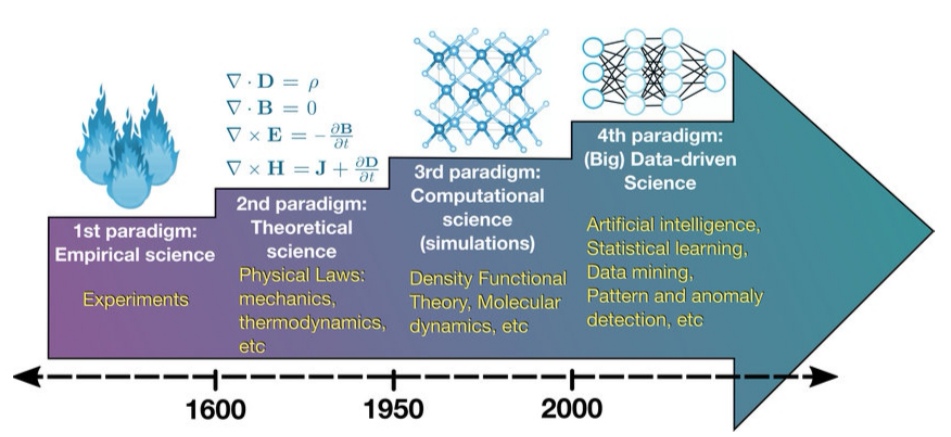Introduction
Computer science no longer deals with only computers and its application. In recent times it has become a vast topic that includes a variety of subjects from astronomy to medicine, from machine to management, everything is related to computer applications. What is shared among all these fields and how are they related to computer science? The answer is data. The big data that every subject has can be analyzed for the benefit of mankind using computer-based technology. Our computer scientists are working closely with scientists from other branches to harness data and give breakthrough results in this field.
How to Use it?
Now experts are trying to understand this data so that they can find connections between things that are not connected in the physical world. Technology has led to vast storage of data which experts can organize, examine, explore, and can store it for future use. According to Marican Hoof, to store multiple data, no transistor required will increase in the coming time, as data is increasing every day. However, the invention of microprocessors has decreased the use of transistors. This is a big evolution in the field of data science.
The first and second paradigm methods involve exploring science and making new discoveries or performing new experiments. The fourth paradigm involves long vision, how to manipulate and use these data to solve global problems. Science has taken a steep turn after the Einstein theorem. By the 20th century, the third paradigm has evolved. It involves computer-based result generation, which allows scientists to explore more that they can’t earlier due to various limitations.
The fourth paradigm involves using big. It involves programming, correlation, and functional relationships to give meaningful results of these data. It has not replaced our scientists but it is acting as a second brain and highly trained expert to manage data more efficiently.
Where Does This Data Help?
In the year 2010 Pepsi managed to make its data more real by building a technology-based program. Once, the Pepsi director was interviewed by ADMA. The interview made it clear that managing big data on a large scale is a reason behind the customer retention at Pepsi. My friend Shen Havitz while practicing medicine noticed that during vacation, the number of patients reporting heart disease is more than usual. This might be because of more intake of oily foods as they are enjoying their holiday meals. Cardiovascular surgery is costly and at the same time, it can be fatal. While lucky patients can get stables, still they need to pay a hefty amount for the surgery. Shen and his colleagues analyzed data from patients for 2 years and they found a connection between recovery rate and chances of acquiring this disease again. Databases of patients have shown that critical patients are more vulnerable than patients suffering from minute congestion. Using this analysis Shen recommended acute patients consult a doctor for 3 months on a regular basis after surgery. It has reduced patients’ re-surgery amount as well as it has made beds free for other patients at the hospital.
Large money-making companies invest a massive amount of money in betting using these data. Also, companies now have an opportunity to use this data to do an analysis of customers’ demands, and their buying patterns and can use this analysis to satisfy their customers and bridge the gap in services. Microsoft and Facebook are able to grow faster because they are using data in a very precise manner. They are working together to grow faster.
Ocean Science and Data
Oceans and the sea cover 70% of our earth’s surface and are the source of several natural disasters like tsunamis, cyclones, and hurricanes. Ocean consists of a wide variety of species and is the biggest reserve of carbon and seafood. Water allows the passing of electromagnetic radiation and hence study of oceanography becomes easy. Scientists are exploring unmanned islands and sea bottoms through an optical fiber. It helps in establishing an Internet connection and access to a variety of data. Studying these data helps in understanding various aspects of oceans:
- Change in sea level
- Density variation
- Temperature-Fluctuation
Scientists can compare data generated through optical fiber and data generated in laboratories, which can help in understanding the data differences and similarities generated in both cases, further improving our understanding of how the ocean, land, and atmosphere are interconnected. Scientists can use this data to forecast tsunamis, ridges formation in the ocean, and volcanic eruptions well in advance. Data generated from the ocean can help in DNA sequencing, which further will show how temperature affects organisms and vegetation inside the ocean.
Disease, Drought, and Data
Data from the 2000s shows 56% of the population is suffering from cancer. This data can help the government to govern the food and utilities which are high sources of this disease. Even now doctors and researchers are using DNA sequencing methods to develop vaccines for HIV using these highly valued data. Similarly, a timely forecast of drought can help the state and country manage the situation well in advance before the situation gets severe. Machine learning can provide real-time data by forecasting monsoon patterns. This type of technology requires a suitable infrastructure, efficient programmers, data storage points, privacy, and high-tech systems to use these data effectively. Satellites are a huge source of data. Numerous companies are using it to manage water, which will be the biggest crisis that mankind will face in the coming time. So developing better real-time sensors can help to achieve a better prediction model.
The fourth paradigm has a huge impact on society also:
- Creating research is more optimistic.
- Improving the pharmaceutical industry.
- Morphing data sets into realistic pictures.

